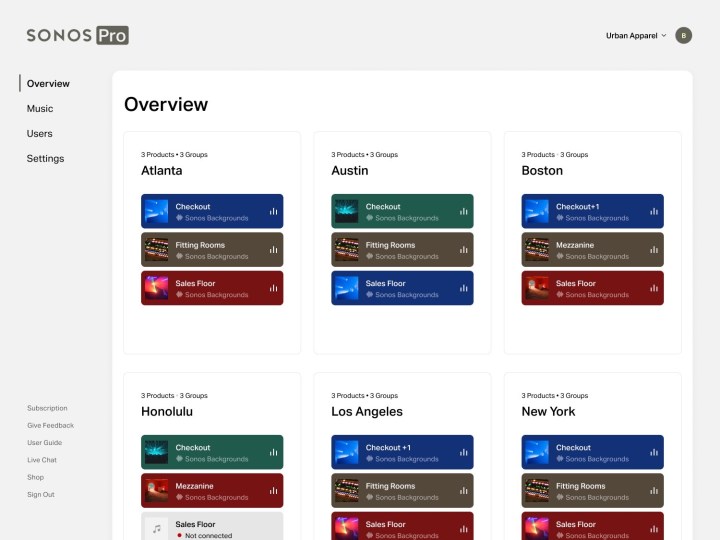Sonos has announced Sonos Pro, a new way for companies with multiple locations to manage all of their Sonos wireless speakers from a central, web-based command center. The software-as-a-service (SaaS) product has subscription pricing: each location you want to control costs $35 per month. It’s a U.S.-only service for now, with additional markets planned for the future.

The system is flexible, letting companies decide how much control over individual locations should be in the hands of their employees — all the way from full control to no control at all. The days of your local Kroger running its own quirky playlist could be over if that sort of thing goes against the brand’s standards for its in-store experience. Or, companies could decide that a local flavor is exactly what they want to promote and give their store managers a big influence on the music their customers hear.
The system also includes a feature called schedules, which is effectively an enhancement of the alarms option within regular Sonos home systems. Playlists or other music can be set to play at specific times of day, in specific locations, or even in specific zones within locations. As part of a subscription, companies will get access to “on-demand premium support from anywhere,” although no mention was made of the support hours that customers can expect.

In addition to providing an intuitive dashboard that lets companies see the exact state of each Sonos speaker in each location,
When Digital Trends asked if Sonos Pro users would still be able to play music from non-commercially licensed subscription music services if they chose, we were told that
Apart from the centralized control and availability of commercially licensed content, Sonos Pro works just like a regular
Employees who have been granted some level of control over their local Sonos system will be invited to log in via the
For companies that already have a cloud-based smart control system, there’s a good chance that Sonos Pro will be able to play nicely — it already works with Crestron, Lutron, and Control4.



